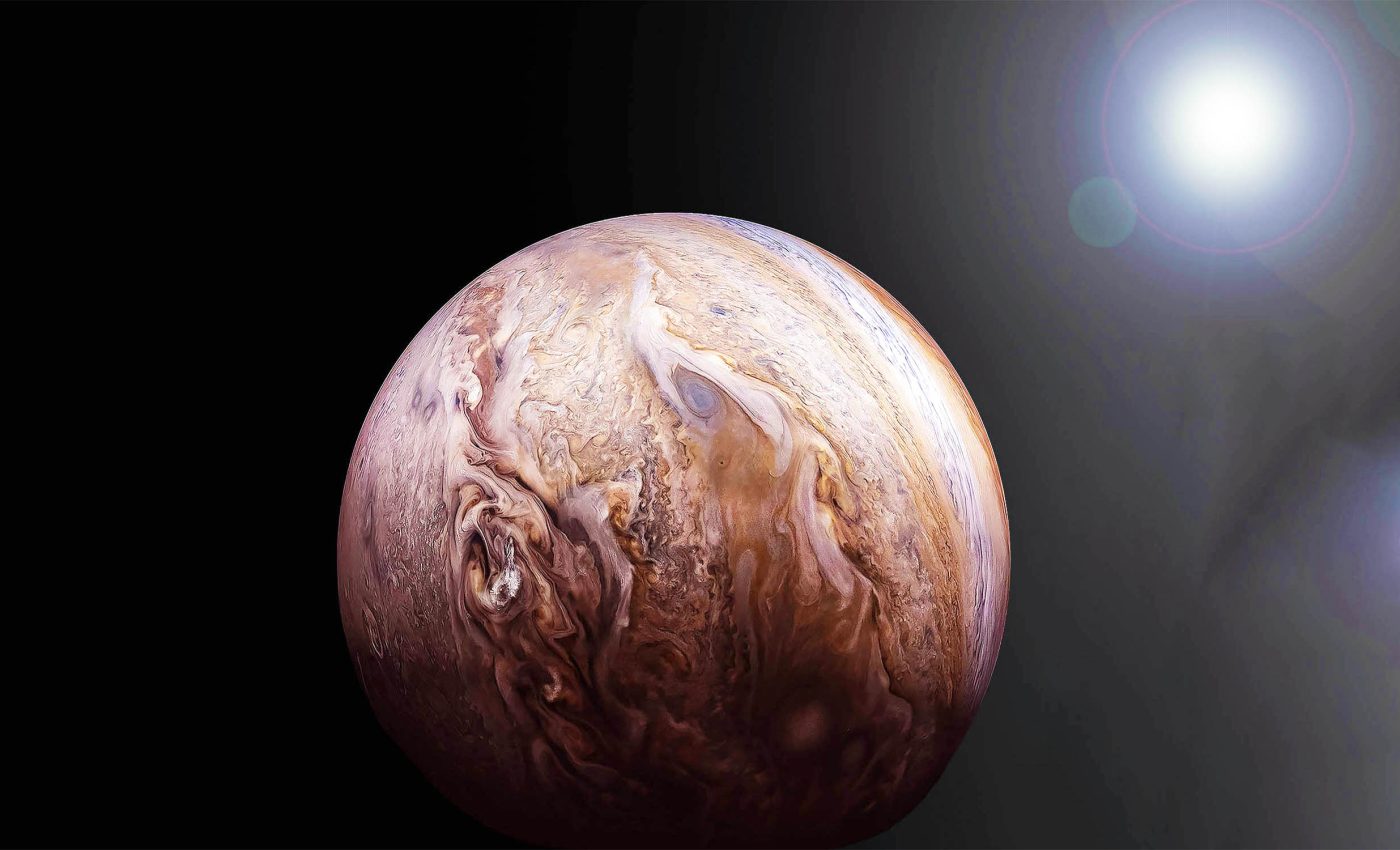
'Super-Jupiter' discovered in the Great Bear constellation
Astronomers have discovered an enormous exoplanet in the Great Bear constellation. The newly identified planet is referred to as a “super-Jupiter” because it has a mass that is many times greater than the gas giant Jupiter.
The discovery was made by experts at the NCU Institute of Astronomy in collaboration with researchers from Spain and the United States.
A truly extraordinary exoplanet
The new exoplanet is extraordinary. It is 11 times more massive than Jupiter, the largest planet in our solar system.
According to the researchers, the planet orbits its host star in 14 years and maintains a temperature no higher than minus 100 degrees Celsius.
The giant world is situated six astronomical units (AU) away. To put this into perspective, an AU is the average distance between the Earth and the Sun – approximately 150 million kilometers.
Super-Jupiter has not been observed directly
Gracjan Maciejewski, leader of the NCU research group, noted that while the team cannot see the planet itself, they can spot the star around which it orbits.
“The star’s physical parameters are similar to those of the Sun. The data indicate that it is 20 percent more massive and twice as large as the Sun,” said Maciejewski.
“Interestingly, it has already completed the stage of evolution that the Sun is currently in; it has five billion years behind it. We can therefore estimate that this is also the age of the entire planetary system.”
Giant star with a massive companion
Maciejewski explained that the planet is located on the northern side of the sky in the Great Bear constellation and bears the designation HD 118203, because it was first listed in Henry Draper’s stellar catalog under this number.
“The telescope used to make the observations for this catalog more than a century ago is now located in our observatory in Piwnice, near Toruń,” said Maciejewski.
For nearly 20 years, astronomers have known that the star HD 118203 has a fairly massive planetary companion. In 2006, the first gas giant was discovered orbiting the star, with a mass of two Jupiters, and it completed its orbit in just six days.
A mysterious planetary system
“Doppler observations, however, indicated that this was not the end of the story, that there might be another planet out there. Therefore, we immediately included this system in our observational programs,” said study co-author Andrzej Niedzielski.
“At first, as part of the Toruń-Pennsylvania exoplanet research program, conducted in collaboration with professor Aleksander Wolszczan, we tracked the object with one of the largest optical instruments on Earth, the nine-meter Hobby-Eberly Telescope in Texas.”
Persistent research pays off
The promising early results encouraged the team to continue their observations, this time in the Canary Islands using the Italian Galileo telescope, which was equipped with advanced instrumentation designed for planet detection.
However, eight years of research did not provide an answer as to what type of an object was being detected.
It took another seven years for the astronomers in Toruń to gather undeniable evidence that they had indeed found a planet.
“Patience pays off,” said Maciejewski. “The new observations collected in March 2023 proved crucial in determining the planet’s orbital parameters.”
“Moreover, because it takes a planet several years to orbit its star, we were able to combine our Doppler observations with available astrometric measurements to unambiguously determine its mass. This allowed us to build a complete model of this planetary system and study its dynamical behavior.”
Confirming the existence of the super-Jupiter
Before fully confirming the discovery of the super-Jupiter, the team had to ensure that there were no other large planets in the system. This task was undertaken by Julia Sierzputowska, a student of astronomy.
“I analyzed photometric observations obtained with the Transiting Exoplanet Survey Satellite space telescope, showing that there were no other planets around HD 118203 larger than twice the size of Earth, and therefore not massive enough to be relevant for studying the dynamics of the system,” said Sierzputowska.
Krzysztof Goździewski, who conducted detailed numerical studies of the system’s dynamics, noted that the system HD 118203 hosts a hierarchical planetary system.
“It is a peculiar configuration in which one planet forms a tight pair with its star, and a second planet orbits the pair in an orbit wide enough to, as it were, form another pair with the first one,” explained Goździewski.
General theory of relativity
Both planets are large and follow elliptical orbits, but despite their gravitational interactions, the system remains stable over millions of years.
“We have shown that this is due to effects arising from the general theory of relativity. If it were not for these effects, the planets would behave like jittery springs, constantly changing the shape of their orbits and their orientation in space,” Goździewski added.
Evolution of planetary systems
The discovery of this hierarchical planetary system adds a new piece to the puzzle of how planetary systems, particularly those with massive planets, form and evolve. Such systems allow astronomers to refine their understanding of planetary dynamics.
“An interesting question is about the paths of development of such planetary configurations,” said Maciejewski.
“Although from our point of view – inhabitants of the Solar System – they are quite ‘exotic,’ learning about systems with massive gaseous planets seems important so that we can get to know our nearest, astronomical backyard.”
According to Niedzielski, the team is still conducting observations and analyzing data, as there are chances for further planetary discoveries. “It is gratifying that we manage to involve students and doctoral students in this interesting and important research.”
The study is published in the journal Astronomy and Astrophysics.
—–
Like what you read? Subscribe to our newsletter for engaging articles, exclusive content, and the latest updates.
Check us out on EarthSnap, a free app brought to you by Eric Ralls and Earth.com.
—–













